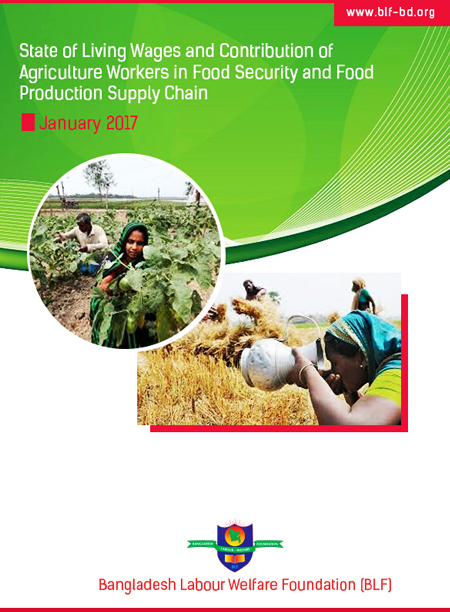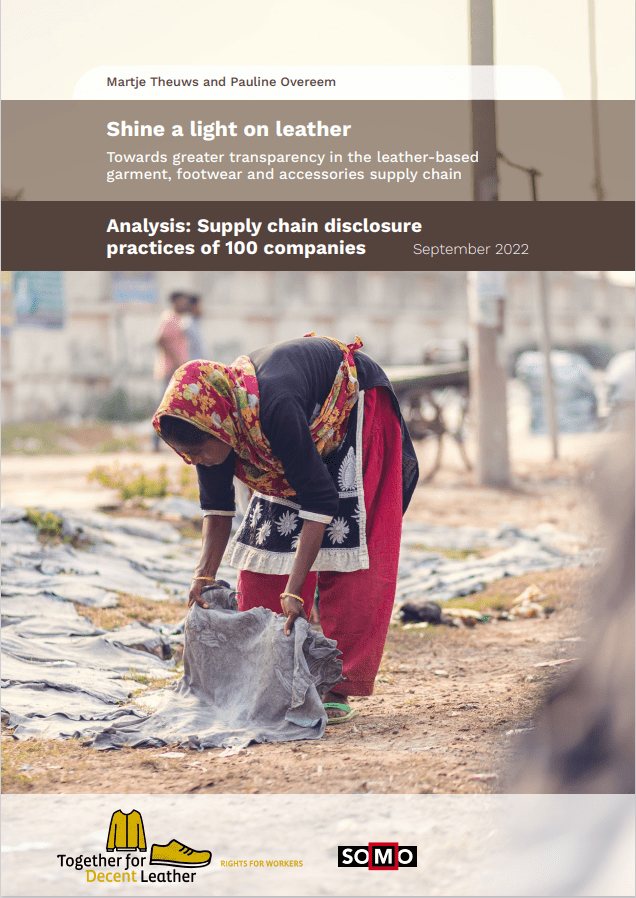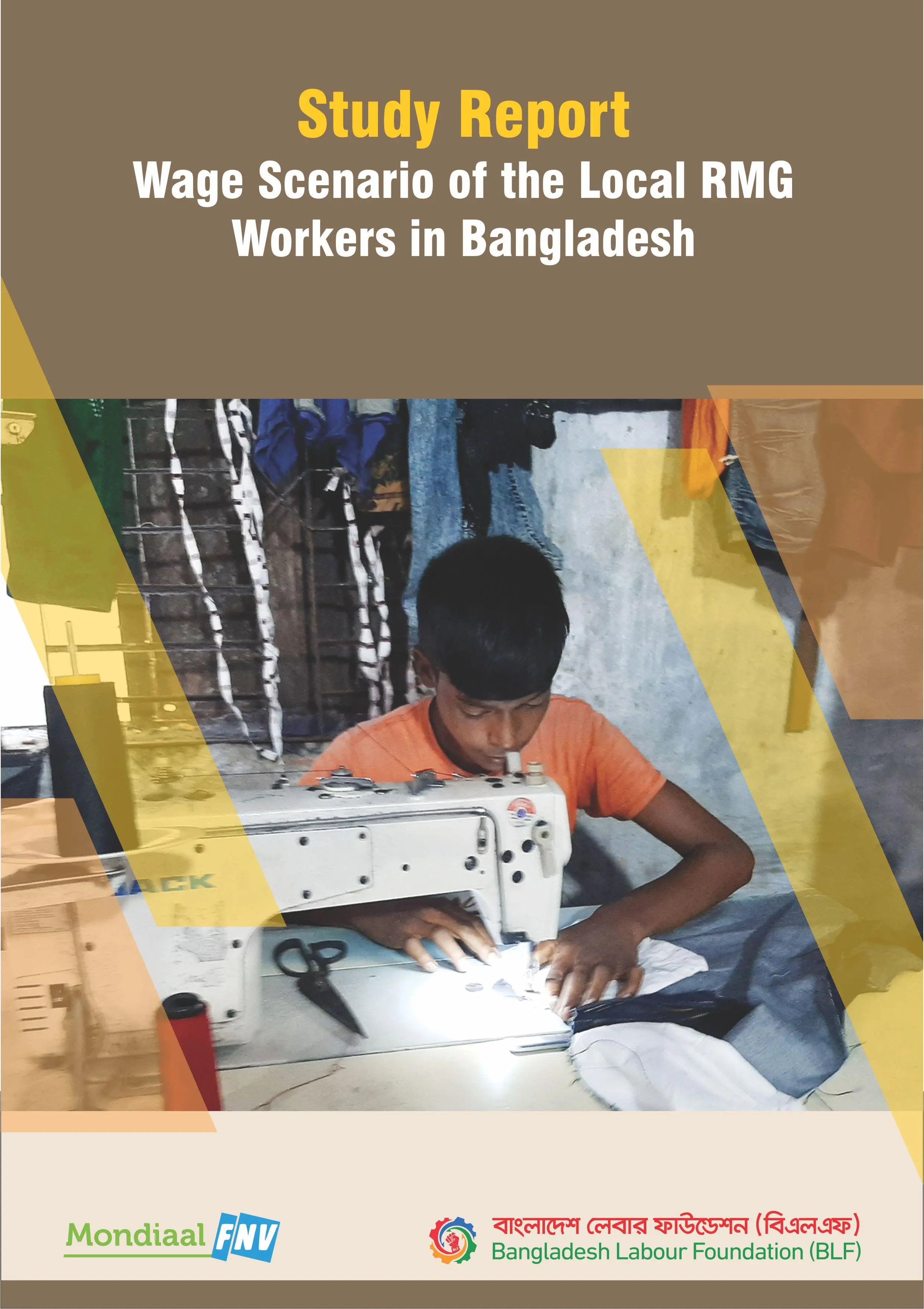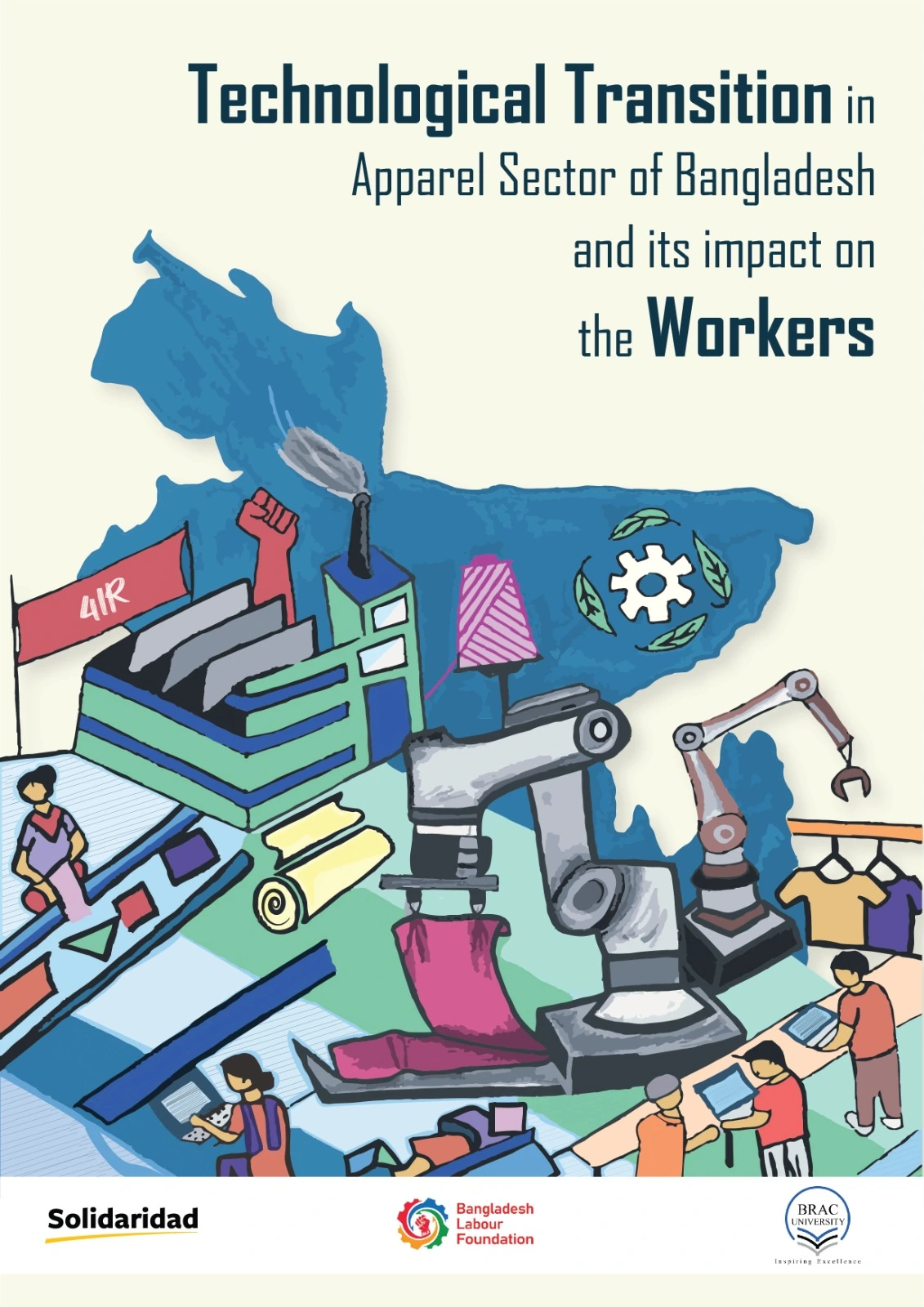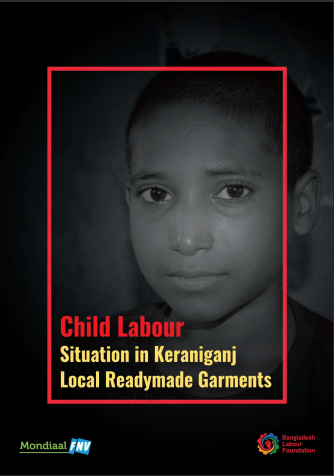This mapping of the Bangladesh leather industry has been made as a part of the Together for Decent Leather programme, which aims to improve working conditions and to reduce labour rights abuses, focusing on production hubs for leather products in South Asia – in particular in Vellore and Chennai districts in Tamil Nadu, India; greater Karachi in Pakistan; and the greater Dhaka region in Bangladesh. The Decent Leather programme particularly focuses on tanning, manufacturing, trade and retail phases of the leather and leather goods supply chain.
Research & Study
Trends in production and trade: Leather products from Bangladesh
July, 2021
This mapping of the Bangladesh leather industry has been made as a part of the Together for Decent Leather programme, which aims to improve working conditions and to reduce labour rights abuses, focusing on production hubs for leather products in South Asia – in particular in Vellore and Chennai districts in Tamil Nadu, India; greater Karachi in Pakistan; and the greater Dhaka region in Bangladesh. The Decent Leather programme particularly focuses on tanning, manufacturing, trade and retail phases of the leather and leather goods supply chain.
Background
South Asia is an important production hub, catering to the international market. Bangladesh has emerged as an important producer of leather footwear for the international market. This overview of trends in the production of leather and leather goods in Bangladesh collates information on the main products produced in Bangladesh, and on important export markets for its leather and leather goods. The report maps key Bangladesh-based leather manufacturers and foreign buying companies. This mapping lists a number of key manufacturers of leather and leather goods as well as a number of key buyers of these products. It should be noted that companies sourcing leather goods from Bangladesh do not necessarily use leather produced in Bangladesh for the production of these goods. They may use leather imported from other countries.
Objectives
- To improve working conditions and to reduce labour rights abuses, focusing on production hubs for leather products in South Asia – in particular the greater Dhaka region in Bangladesh.
Key Findings
- The industry also faces substantial challenges related to environmental and social impacts, particularly concerning tannery processes. These issues have led major brands like H&M and Deichmann to avoid using Bangladeshi leather, instead opting for imported leather for products manufactured in Bangladesh.
- The COVID-19 pandemic exacerbated these challenges, significantly impacting production and export activities. However, there are signs of recovery as political instability in Myanmar has redirected some international orders to Bangladesh.
- The study underscores the complexity and opacity of the leather supply chain in Bangladesh, which hinders transparency and traceability from production to end-product. This lack of transparency is due to both governmental and corporate reticence in disclosing detailed supply chain information.
Recommendations
- Industry needs to invest in modernizing tanneries to reduce environmental pollution.
- Worker welfare and labor conditions also require significant improvement.
- Fostering strategic partnerships with international brands and investors can bring in much-needed expertise and capital.
- Diversity the product range and moving up the value chain by focusing on high-end leather products can open new markets and increase export revenues.
When it comes to corporate transparency, many relevant players are not forthcoming with information about their supply chains. While in recent years, an increasing number of garment brands and retailers have started to disclose their supplier base such transparency is far less common in the footwear sector – an important segment in the global leather and leather goods industry. In addition, corporate supply chain transparency is often limited to first-tier suppliers. Transparency up to the level of tanneries is very rare.
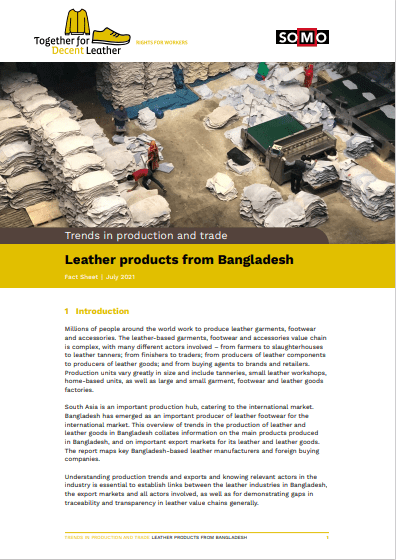
Publication Details
Date: July, 2021
Contact
Bangladesh Labour Foundation (BLF)
107 Bir Uttam C.R. Datta Road
Dhaka – 1205
Bangladesh

